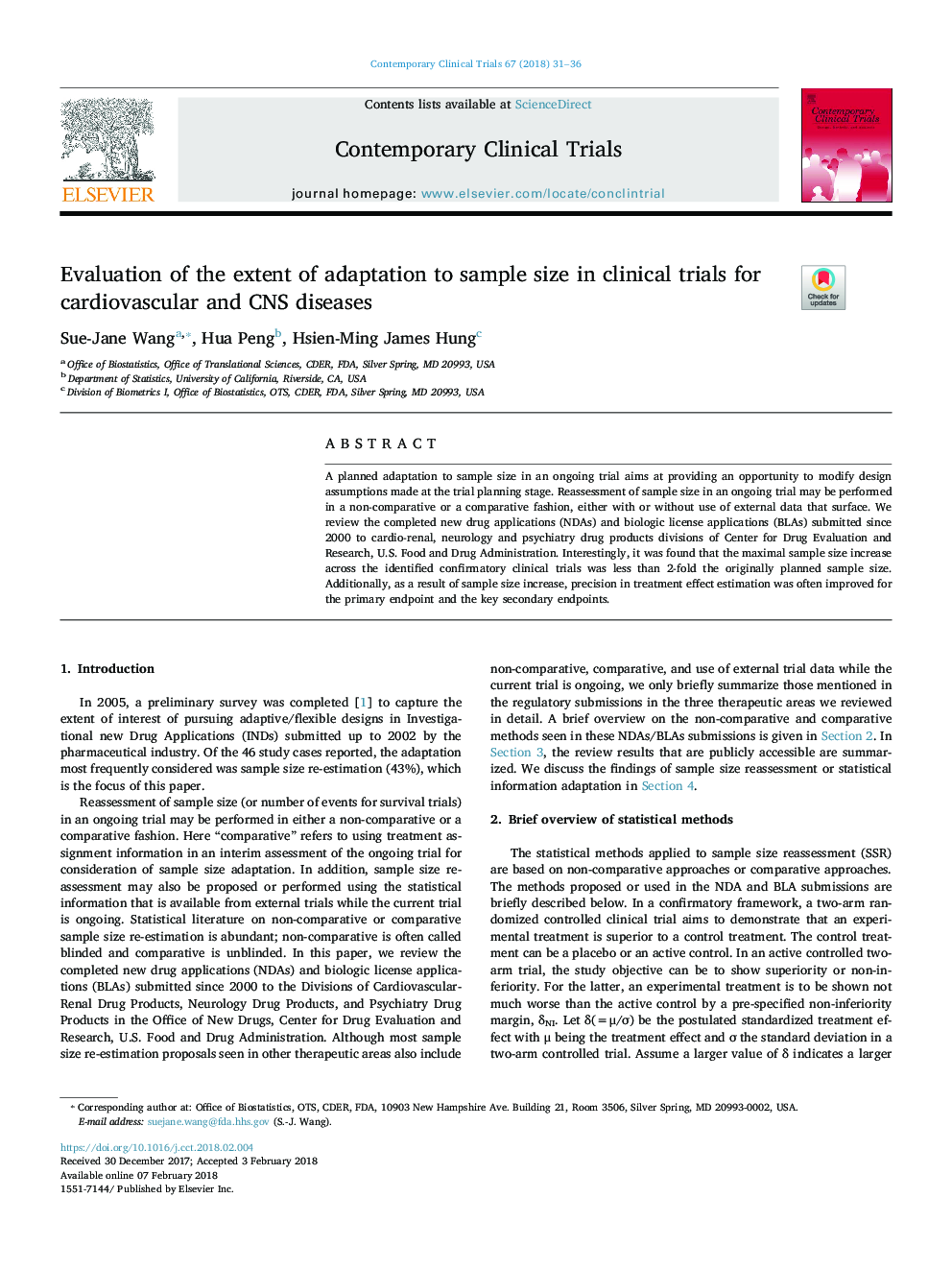| Article ID | Journal | Published Year | Pages | File Type |
|---|---|---|---|---|
| 8757543 | Contemporary Clinical Trials | 2018 | 6 Pages |
Abstract
A planned adaptation to sample size in an ongoing trial aims at providing an opportunity to modify design assumptions made at the trial planning stage. Reassessment of sample size in an ongoing trial may be performed in a non-comparative or a comparative fashion, either with or without use of external data that surface. We review the completed new drug applications (NDAs) and biologic license applications (BLAs) submitted since 2000 to cardio-renal, neurology and psychiatry drug products divisions of Center for Drug Evaluation and Research, U.S. Food and Drug Administration. Interestingly, it was found that the maximal sample size increase across the identified confirmatory clinical trials was less than 2-fold the originally planned sample size. Additionally, as a result of sample size increase, precision in treatment effect estimation was often improved for the primary endpoint and the key secondary endpoints.
Related Topics
Health Sciences
Medicine and Dentistry
Medicine and Dentistry (General)
Authors
Sue-Jane Wang, Hua Peng, Hsien-Ming James Hung,
